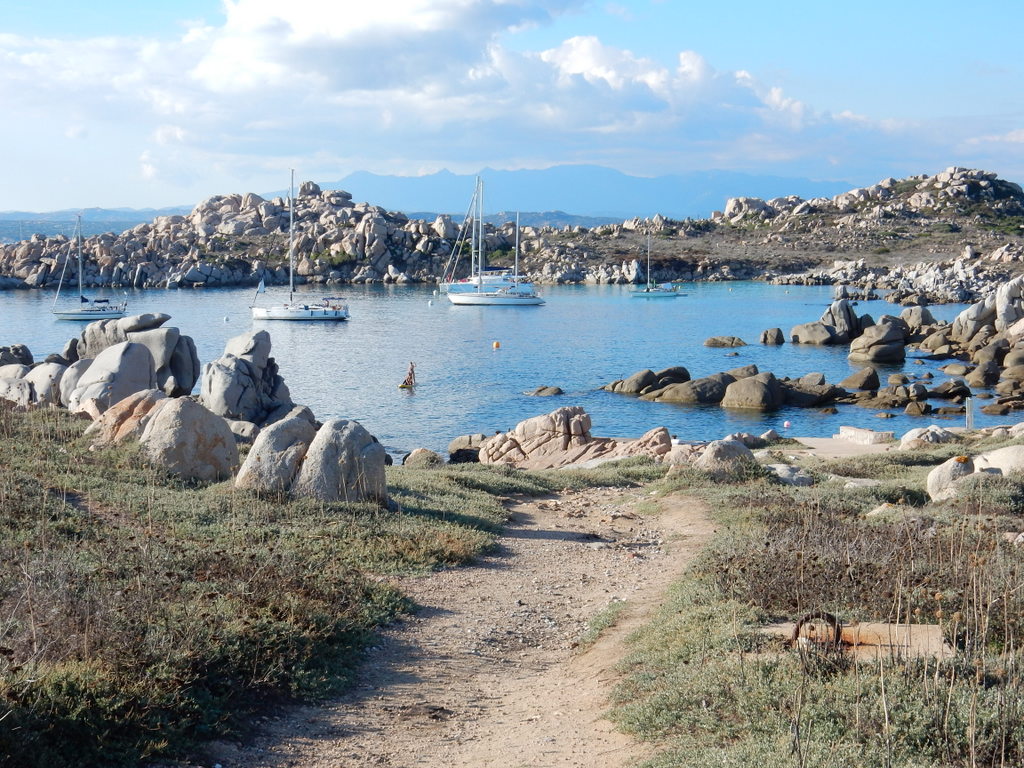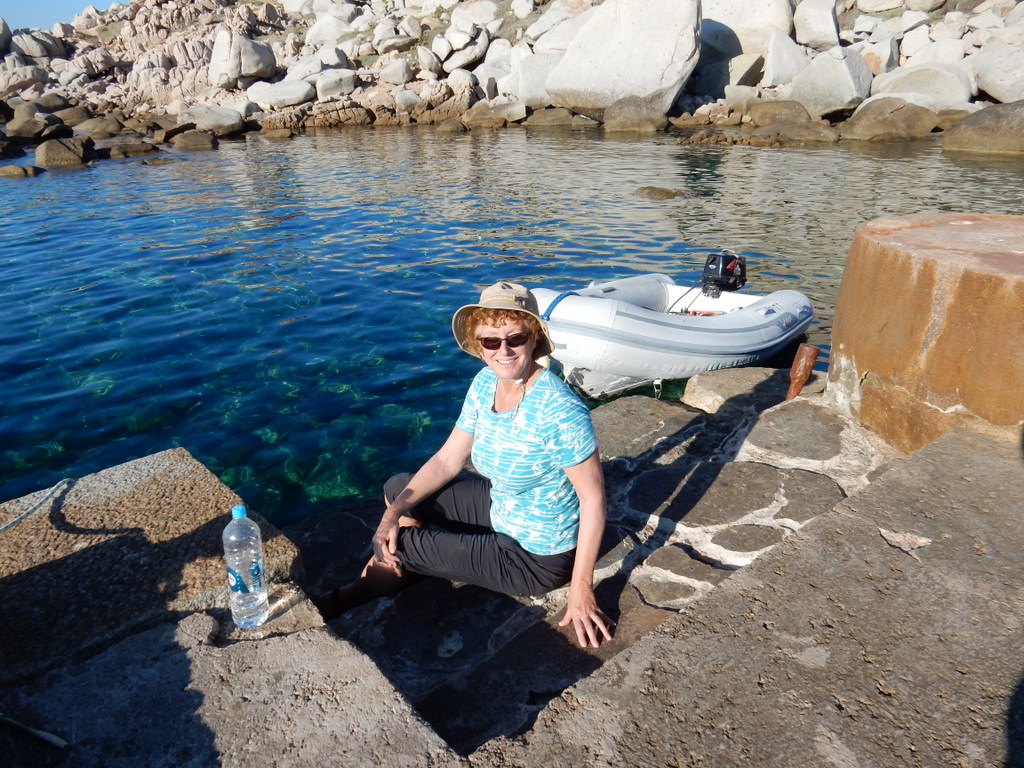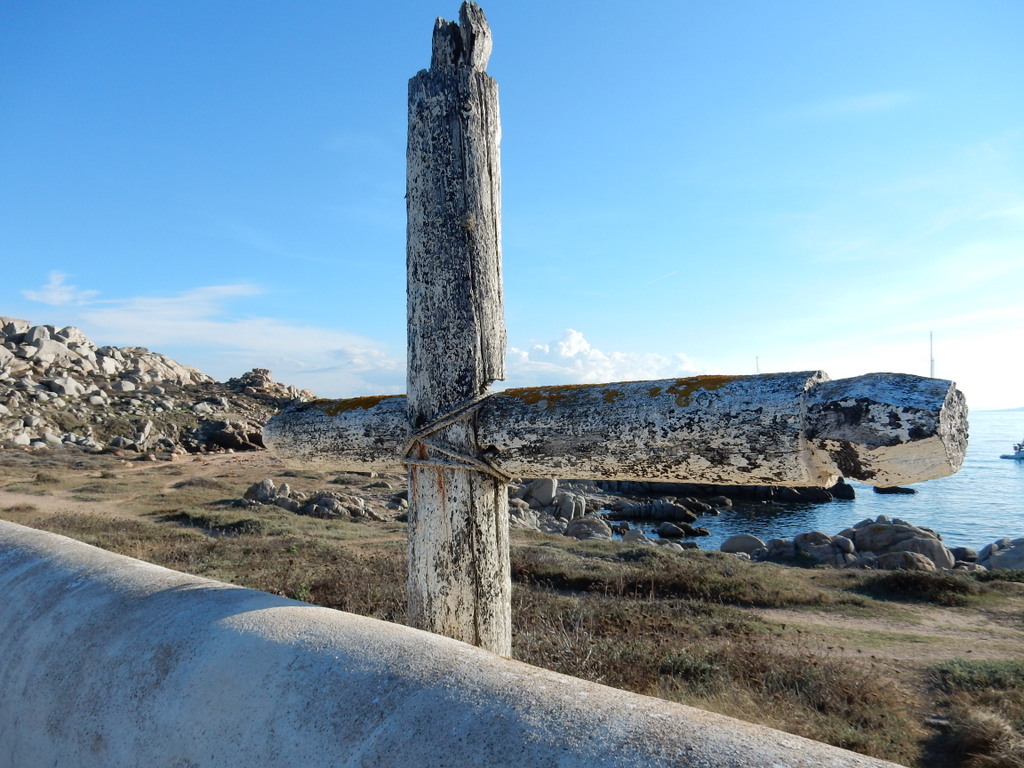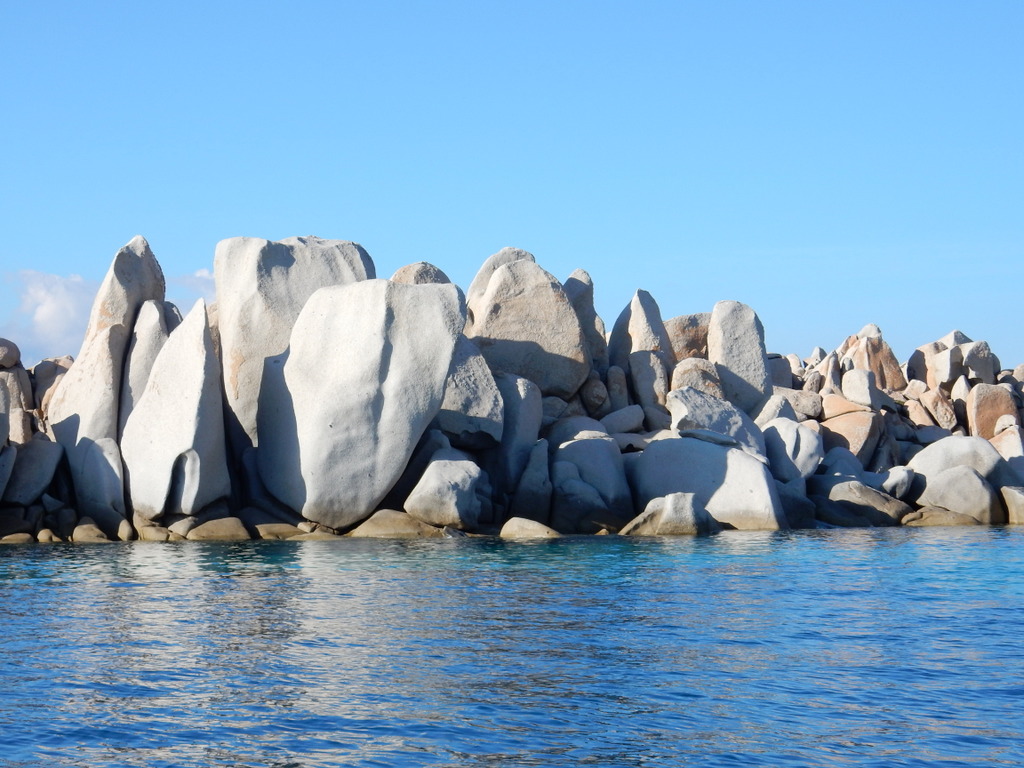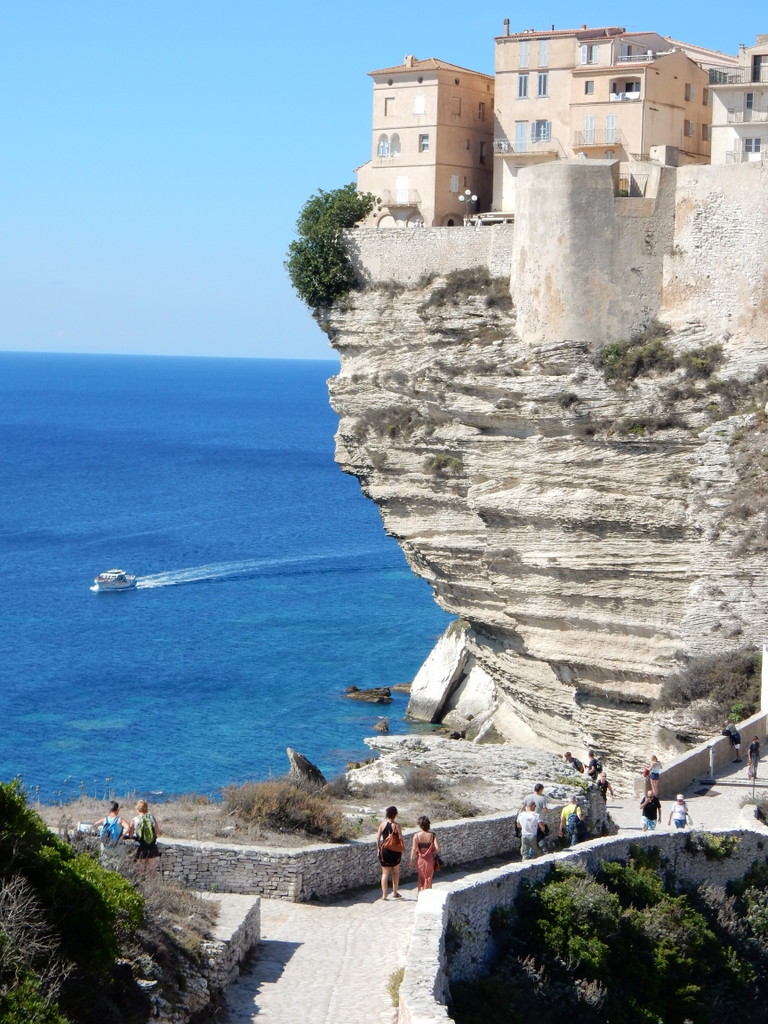
We left Porto Vecchio, Corsica on September 19th and sailed south along the east coast before anchoring in the Golfe di Rondinara, a popular and very pretty and protected bay about 15 sailing miles away. It was a beautiful sunny day with lots of wind. Rondinara has lots of sea grass so there was not much room to drop anchor in sand, and even the sand that was available is thin and offers poor holding. In the hours after we anchored, many other boats squeezed into the bay, often getting too close to boats that were already at anchor. That made me nervous, particularly since a charter boat whacked Sabbatical III in Porto Pino by anchoring too close just one week before. As it were, a large power yacht in front of us hit another power yacht while both were at anchor and swinging in the wind and they got entangled, leading to a lot of shouting and rushed activity. As the offending yacht re-anchored alongside Sabbatical III, I stood on deck with my hands on my hips and stared at him just to let him know of my concerns. Hopefully, my actions persuaded him to stay a few meters further from me than he otherwise would have. Nonetheless, the crowd made us nervous all night and we left first thing in the morning.
I checked the charts looking for someplace less popular with lots of space even if it was not as well protected. The large bay at Santa’Manza fit the bill perfectly. It was wide open to the northeast quadrant but there was only one other vessel at anchor when we arrived, and he soon left, and we could tell that as long as we paid attention to wind direction and were willing to put up with some swell from the strong wind, we could anchor in peace and security. Ashore, there was a beach bar that was only open on the weekend, and the small hamlet of Santa’Manza – so small that it lacked basics such as a bakery or any type of store, and bus service. However, the small Hotel du Golfe was open along with the hotel restaurant. What a gem it turned out to be. We ate at the hotel restaurant every day and in the late afternoon sat on their patio overlooking the bay and drank Pastis while using their WiFi. There was a beautiful walk along the north side of the bay with small sandy beaches interspersed with rocky shore.
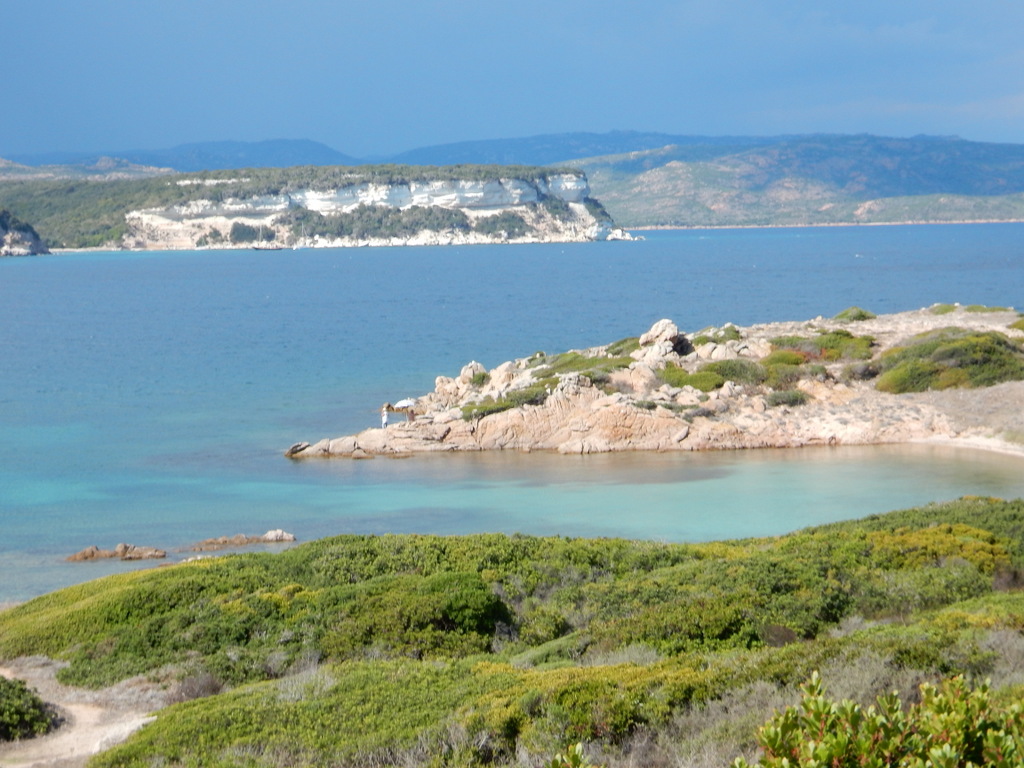

Our plan was to spend a couple of nights in Santa’Manza, waiting for the wind to settle down, and then sail around to the famous city of Bonifacio, set on the white chalk cliffs of the Bonifacio Strait, where we would have to stay in a pricey marina. As we walked along the bay after lunch at the Hotel du Golfe on our first day, our waiter, Silvio, drove by and asked if we needed a ride. He was going to Bonifacio. So we hopped into his car and 15 minutes later we at the citadel of Bonifacio, a high promontory overlooking the Straits. It is such an impressive place. A walled city dating to the 9th century sitting on a narrow peninsular high over the Mediterranean. There is a very narrow fjord that cuts through sheer chalk cliffs and into the small port. While there we noticed that the marina was full, probably because boats were waiting for the wind to calm before heading out into the Bonafacio Strait, considered the windiest place in the Mediterranean. Both Silvio and the proprietress of the Hotel du Golfe said that if we wanted a ride to Bonifacio from Santa’Manza on another day, we should just stand on the side of the road with our thumb out and a local would take us. It was true. Because of that we kept the boat at anchor in quiet Santa’Manza and hitched into Bonaficio. There were only a few hours of uncomfortable roll at anchor during the five days we were there.
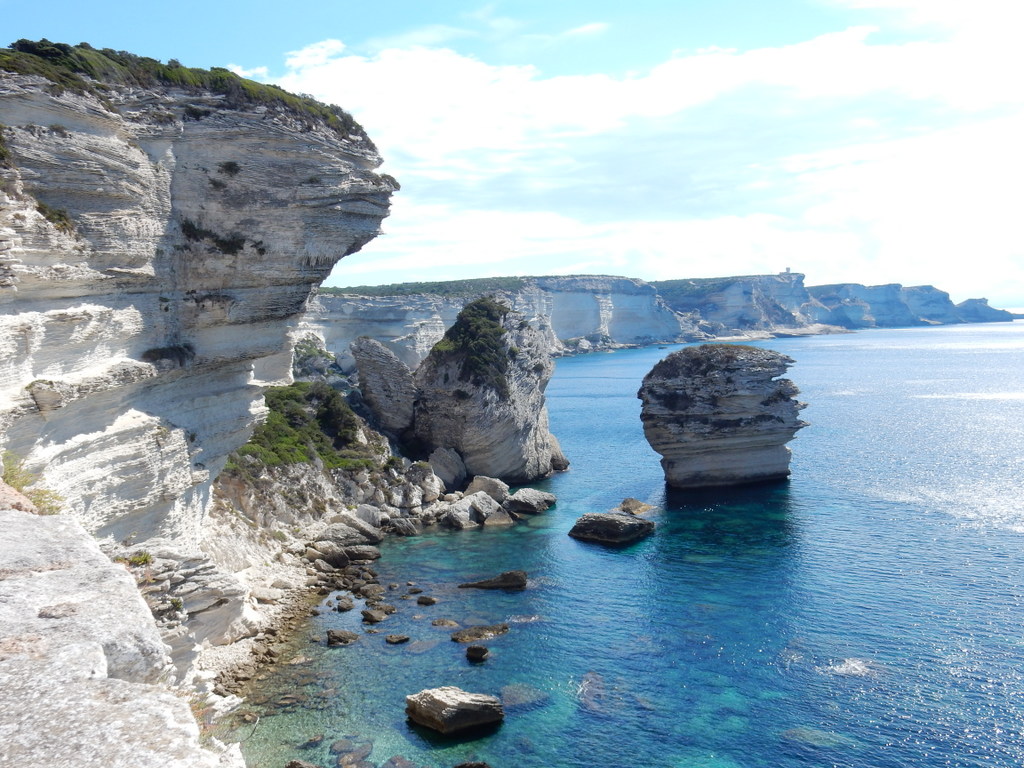
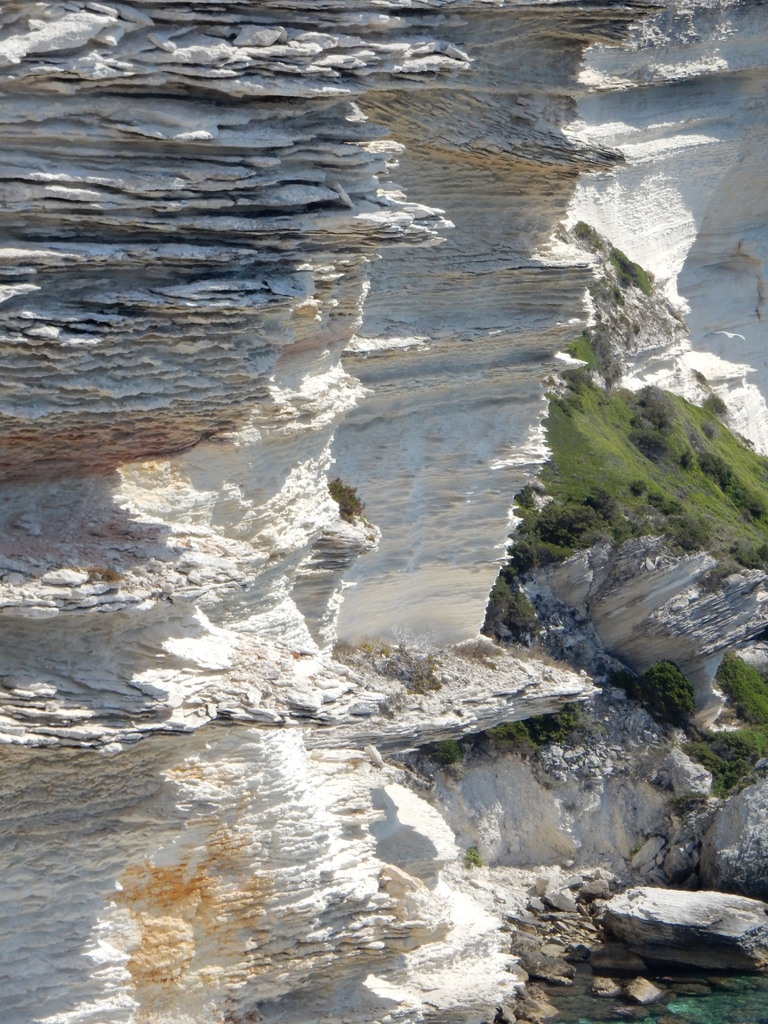
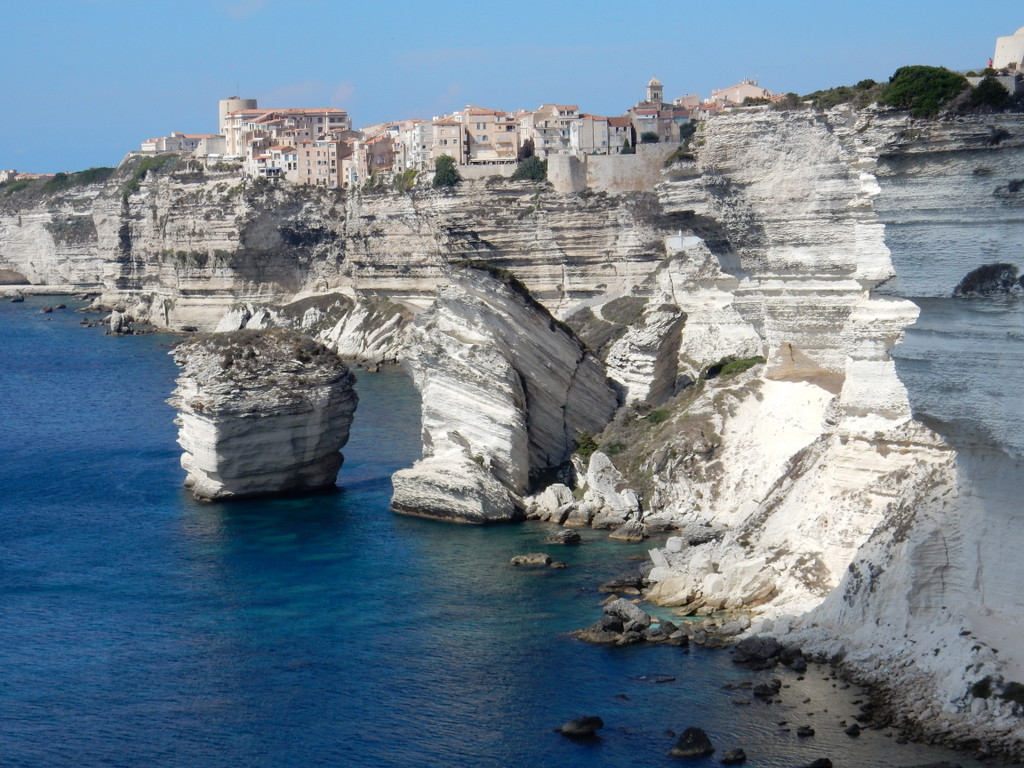
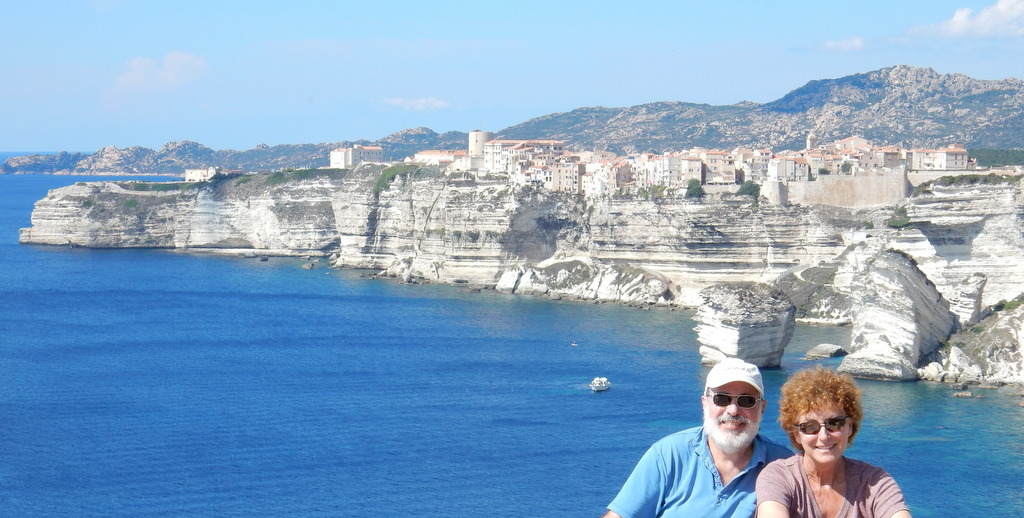
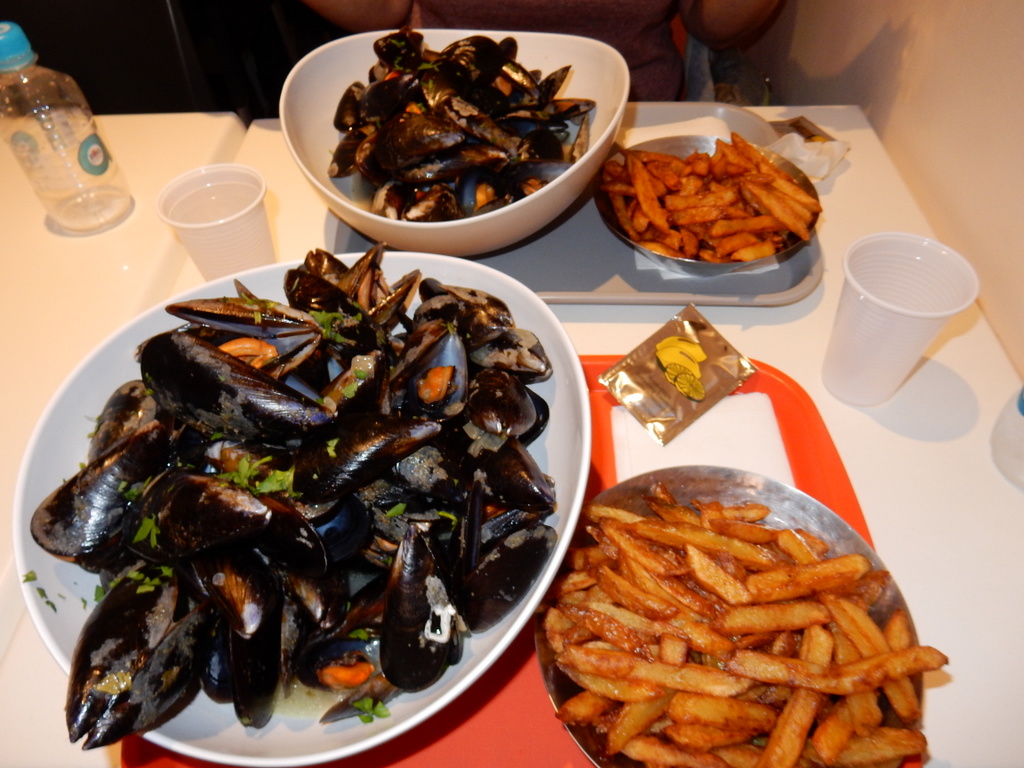
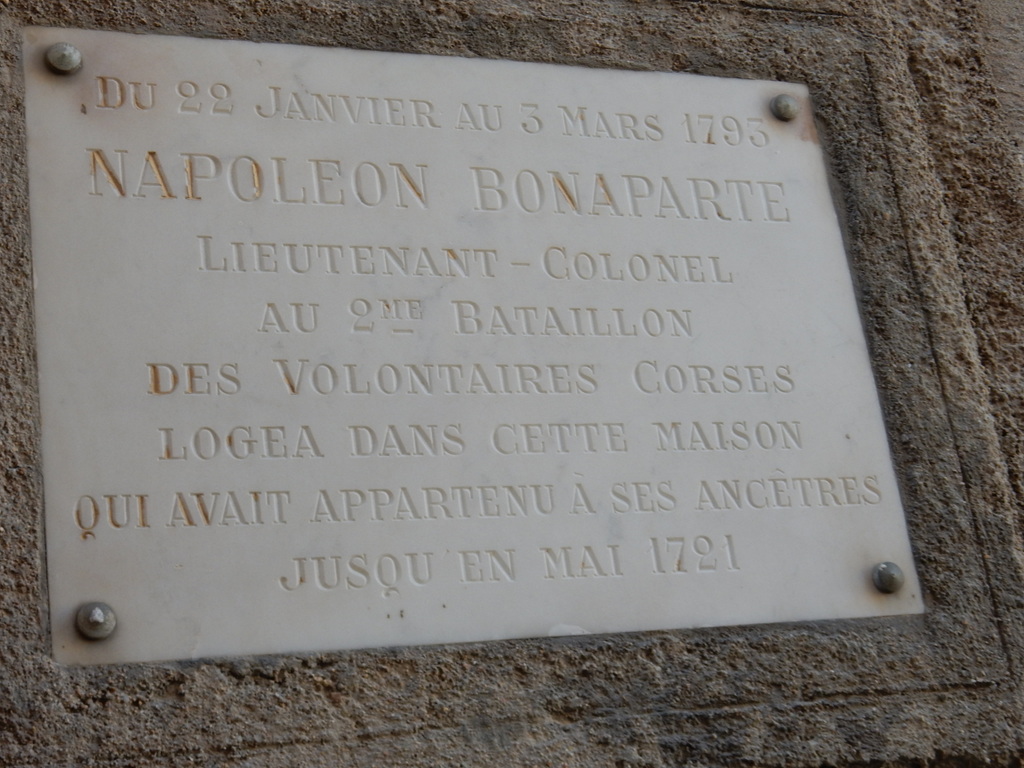
The wind calmed to nearly nothing so we decided to visit the uninhabited French island of Lavezzi in the Bonifacio Strait, the southernmost part of Metropolitan France, on our way back to Sardinia. It is a very pretty place but hard to enter and leave without local knowledge. After a night at Lavezzi, we crossed the Bonifacio Strait to the “La Colba†anchorage on the south side of Capo Testa, Sardinia. We will describe more of our trip back from Corsica in our next blog entry.
M.
